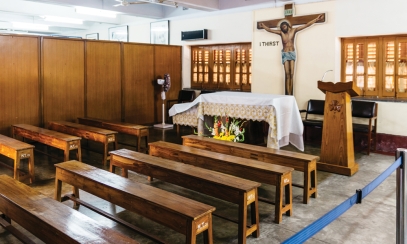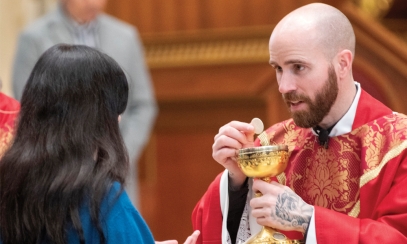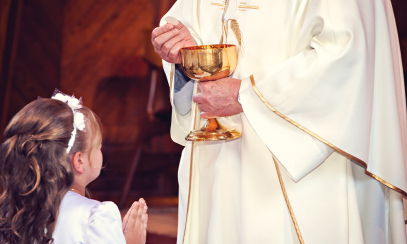
Do we receive Jesus’ crucified or resurrected body in Holy Communion?
Question: When we receive Holy Communion, do we receive Christ's pre-crucifixion body (his body as it was at the Last Supper), his crucified body or his resurrected body, and why does it matter?
Question: When we receive Holy Communion, do we receive Christ's pre-crucifixion body (his body as it was at the Last Supper), his crucified body or his resurrected body, and why does it matter?
Answer: In Holy Communion, we truly receive the Risen Christ (including his glorified body) under the appearances of bread and wine. “Communion with the flesh of the risen Christ, a flesh ‘given life and giving life through the Holy Spirit,’ preserves, increases, and renews the life of grace received at Baptism” (Catechism of the Catholic Church no. 1392).
Answer: In Holy Communion, we truly receive the Risen Christ (including his glorified body) under the appearances of bread and wine. “Communion with the flesh of the risen Christ, a flesh ‘given life and giving life through the Holy Spirit,’ preserves, increases, and renews the life of grace received at Baptism” (Catechism of the Catholic Church no. 1392).
Imagine what a thrill it would be to go back in time and attend the Last Supper – history’s first Mass! And yet, as 21st-century Catholics, we receive a gift that the Apostles did not receive that evening when Christ instituted the sacrament of the Holy Eucharist. Today, when we receive Holy Communion, we are receiving the Risen Christ, including his glorified body (along with his human soul and his divinity).
Why is coming into communion with Christ’s glorified body in Holy Communion such a sublime gift? In two words: divine power. Think of how a suffering woman was transformed just by touching Jesus’ garment: “And a woman afflicted with hemorrhages for twelve years…came up behind him and touched the tassel on his cloak. Immediately her bleeding stopped. …Jesus said, ‘Someone has touched me; for I know that power has gone out from me’” (Luke 8:43-44, 46).
Through his glorified body in Holy Communion, Christ communicates to us both his healing and his power, especially the power to overcome sin and death. As Pope St. John Paul II observes, “Those who feed on Christ in the Eucharist need not wait until the hereafter to receive eternal life: they already possess it on earth, as the first-fruits of a future fullness which will embrace man in his totality, since ‘in the Eucharist we also receive the pledge of our bodily resurrection at the end of the world.’”
Jesus’ glorified body points to the destiny which God has in store for our own bodies if we die in his friendship. This is already true of Mary’s body when she was glorified and taken up, body and soul, into heaven, an event we celebrate every August on the Solemnity of the Assumption of the Blessed Virgin Mary. As long as we die in the state of grace (free from mortal sin), our bodies too will be glorified.



